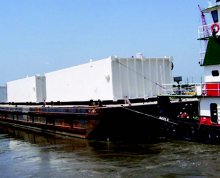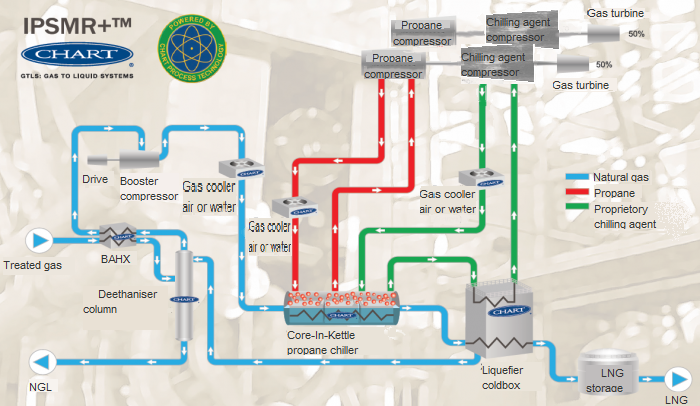Liquefaction of the natural gas
Small and medium size LNG:
Natural gas is second only to coal as a worldwide source of energy. Share of liquefied natural gas (LNG) in natural gas transportation and consumption is growing. It is small wonder that LNG process solutions and associated equipment offered by Chart are becoming increasingly critical for the international industries. Chart’s main take on LNG is the process and associated equipment for liquefaction of small and medium quantities of gas from more than 2000 gas fields of 0.07 to 1.5 mmscm of natural gas as well as alternative natural gas sources such as coal bed methane or flare gas. Processes for liquefaction of large quantities of natural gas are unfeasible for such application, so different methods and techniques had to be developed and implemented.
Liquefaction of natural gas in small volumes:
LNG beats diesel as a commercial fuel. It is also favorable from the greenhouse gases prospective. There is a lot of effort worldwide to transfer commercial transport fleet from diesel to LNG. Chart leads the way in this international industry and is in a unique position to offer a complete virtual pipeline concept – from the sour gas at the site to LNG fuelling station.
Mid-scale LNG production:
Chart specializes in monetizing mid-range natural gas resources via mission-specific units of up to 2 million tons of product per year capacity.


IPSMR™:
Chart adopted a process of natural gas liquefaction to their specific goal. Using a proprietary complex chilling agent, this process is highly energy efficient and effective and significantly reduces the cost of produced LNG.
Areas of use
- Transportation fuel – trucks and lorries, buses, ships
- “Virtual pipeline”
- An LPG alternative to powering spread out villages and towns
- Electricity production where the grid is unavailable
- Reducing greenhouse gas emissions – flare gas, coal bed methane and biogas
- Off-shore LNG plants




